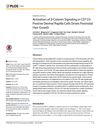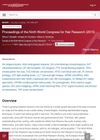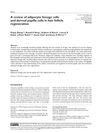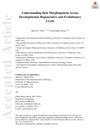Search
for
Did you mean Hair Follicle Regeneration?
Learn
5 / 65 resultslearn Stem Cell Factor
learn Osteopontin
signaling protein that, when suppressed, may grow hair by reducing inflammation and stem cell loss
learn Beta Polypeptide
learn Overview
Research
5 / 1000+ results
research Emerging Role of Dermal White Adipose Tissue in Modulating Hair Follicle Development During Aging
Fat tissue under the skin affects hair growth and aging; reducing its inflammation may help treat hair loss.

research Activation of Beta-Catenin Signaling in CD133-Positive Dermal Papilla Cells Drives Postnatal Hair Growth
Activating β-catenin in certain skin cells speeds up hair growth in mice.

research Proceedings of the Ninth World Congress for Hair Research 2015
The 2015 Hair Research Congress concluded that stem cells, maraviroc, and simvastatin could potentially treat Alopecia Areata, topical minoxidil, finasteride, and steroids could treat Frontal Fibrosing Alopecia, and PTGDR2 antagonists could also treat alopecia. They also found that low-level light therapy could help with hair loss, a robotic device could assist in hair extraction, and nutrition could aid hair growth. They suggested that Alopecia Areata is an inflammatory disorder, not a single disease, indicating a need for personalized treatments.

research A Review of Adipocyte Lineage Cells and Dermal Papilla Cells in Hair Follicle Regeneration
Cell-based therapies using dermal papilla cells and adipocyte lineage cells show potential for hair regeneration.

research Understanding Skin Morphogenesis Across Developmental, Regenerative, and Evolutionary Levels
The article concludes that studying how skin forms is key to understanding skin diseases and improving regenerative medicine.
Community Join
5 / 1000+ resultscommunity Verteporfin and Microneedling
Clinical studies by Dr. Barghouthi and Dr. Bloxham indicate that Verteporfin, when used with FUE and FUT hair transplantation methods, shows promise in hair follicle regeneration and minimal scarring due to its ability to inhibit Yes-associated protein (YAP). Microneedling at depths of 3-3.5mm, combined with Verteporfin, could potentially reactivate dormant follicles, although the optimal dosage and application method are still under investigation. Concerns remain about the DHT sensitivity of regenerated follicles, highlighting the need for further research to optimize trauma levels and Verteporfin concentrations to achieve effective and scar-free hair regeneration.
community PP405 is nothing but a scam and Pelage know it.
PP405 is criticized for overhyped claims and cherry-picked data, with doubts about its effectiveness compared to minoxidil and finasteride. Many users express skepticism, emphasizing the need for more comprehensive trial results.
community Its just getting worse and worse
A 26-year-old is experiencing hair loss despite using minoxidil and dutasteride. Suggestions include shaving his head, trying oral minoxidil, or considering a hair transplant.
community Looks like a real cure to the root of baldness (DHT-induced senescence) was proven earlier this year
A study that outlines the full model for androgenic alopecia (AGA) which links DHT to cellular senescence in dermal papilla cells, and suggests black chokeberry as a source of cyanidin 3-O-arabinoside polyphenol with potential anti-oxidant properties that could reverse this process. The post encourages reaching out to experts in anti-aging and longevity to research treatments involving the polyphenol.
community Dht kills hair, but no one says why?
DHT affects hair follicles, contributing to hair loss, but the exact mechanism is unclear. Treatments like finasteride and minoxidil are used to manage hair loss, though they may have side effects and varying effectiveness.